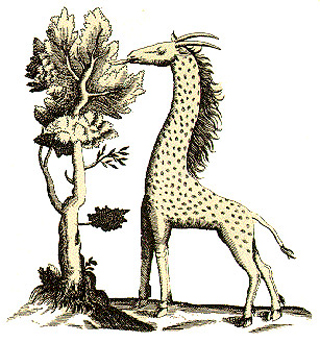-

-
Courses
Find courses by:
Collections
Cross-Disciplinary Topic Lists
- About
- Donate
- Featured Sites
This is an archived course. A more recent version may be available at ocw.mit.edu.

A giraffe, also known as a cameleopard because the creature has the size of the camel, but has the skin of a leopard. (Image courtesy of Prof. Robert Berwick.)
Prof. Robert Berwick
6.891
Fall 2004
Graduate
Why has it been easier to develop a vaccine to eliminate polio than to control influenza or AIDS? Has there been natural selection for a 'language gene'? Why are there no animals with wheels? When does 'maximizing fitness' lead to evolutionary extinction? How are sex and parasites related? Why don't snakes eat grass? Why don't we have eyes in the back of our heads? How does modern genomics illustrate and challenge the field?
This course analyzes evolution from a computational, modeling, and engineering perspective. The course has extensive hands-on laboratory exercises in model-building and analyzing evolutionary data.
Berwick, Robert. 6.891 Computational Evolutionary Biology, Fall 2004. (MIT OpenCourseWare: Massachusetts Institute of Technology), https://ocw.mit.edu/courses/electrical-engineering-and-computer-science/6-891-computational-evolutionary-biology-fall-2004 (Accessed). License: Creative Commons BY-NC-SA
For more information about using these materials and the Creative Commons license, see our Terms of Use.
